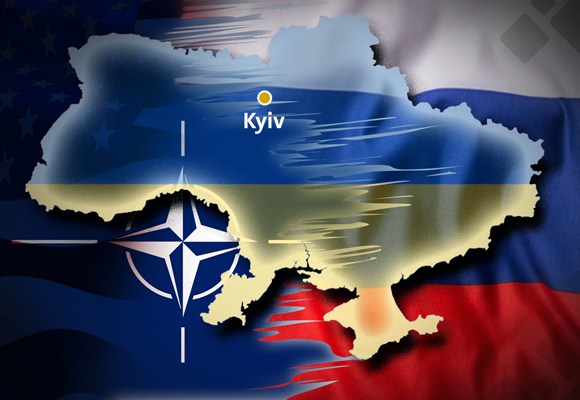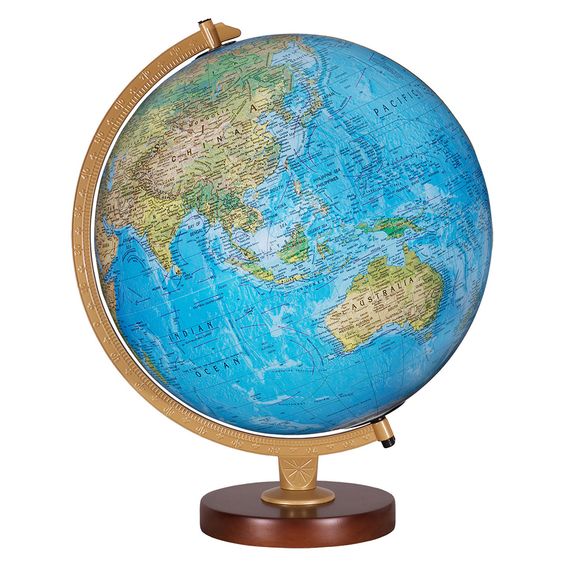
At the top of the agenda will be the question of NATO membership for Ukraine
By Tom Arms
Vilnius is about to enter the history books. The capital of Lithuania will next week (Tuesday and Wednesday) be the scene for a potentially historic NATO summit.
At the top of the agenda will be the question of NATO membership for Ukraine.
Needless to say, a decision to invite Ukraine into the Western Alliance would have global repercussions. It would both deter and infuriate Russia. Extend the Eastern borders of NATO. Strengthen the European arm of the Alliance. Allow the US to move more resources to the Pacific which would anger the Chinese.
As of this writing most of the European members of NATO- with the exception of Hungary and possibly Turkey—favour the admission of Ukraine. The Biden Administration is not so keen because of the fear of Russian retaliation. On Fri c day, Moscow conducted nuclear air drills over the Baltic region. It was a clear pre-summit warning of the possible consequences of Ukrainian NATO membership.
However, Ukrainian Foreign Minister Dmytro Kuleba, made a compelling case for Ukraine half in NATO in this week’s issue of Foreign Policy magazine. “Today,” he writes, “Ukraine is a net contributor of security protecting the European-Atlantic Community from an aggressive and revanchist Russia… When Ukraine wins the war it will have battle-hardened Ukrainian troops protecting NATO’s Eastern flank.”
He appears to accept the political and security problems that would accompany full-fledged membership of the Western Alliance. “We are not seeking immediate membership,” he writes. “We will not drag NATO into this war. We have never requested foreign troops on the ground in Ukraine. With the generous assistance of our partners we will defeat Russia on our own. This war is ours to fight.”
But he adds that the “next war” can be avoided by admitting Ukraine into NATO. However, Kuleba leaves open when that membership would be finalized. Instead he suggests that NATO publicly accept that Ukraine is as important to NATO to as NATO is to Ukraine. Furthermore that Ukraine is an “inseparable part of the Euro-Atlantic security” framework and finally that Ukraine is invited to join NATO and that that membership will take effect “when all the conditions are met.” The foreign minister does not spell out what the conditions should be.
Ukrainian membership of the Alliance will dominate the Vilnius Summit but there are other major issues. Among them are Swedish membership of the Alliance. Turkish President Recep Tayyip Erdogan continues to block Swedish entry because of the Swedes insistence on providing sanctuary for Turkish political refugees. Erdogan will come under strong pressure to drop his veto.
As for China, they are concerned that the recent opening of a NATO office in Tokyo is a sign that NATO is expanding outside the North Atlantic region
If he does then NATO’s Northern Flank will be immeasurably strengthened. Finnish membership has already added an 832 miles of border with Russia. Poland is increasing its defense expenditure to four percent of GDP and the Baltic States to three percent. The addition of the Swedish navy will transform the Baltic Sea from a Russian to NATO Lake.
China is also high on the agenda. Washington wants to encourage increased defense spending by the European arm of the Alliance to enable it to focus more on Asia. This fits with French President Emmanuel Macron’s plans to use the EU to increase security cooperation. As for China, they are concerned that the recent opening of a NATO office in Tokyo is a sign that NATO is expanding outside the North Atlantic region.
 World Review
World Review
The upsurge in violence in Israel is no surprise
It is a direct result of the government’s swing to the far-right. In fact Likud leader Benjamin Netanyahu is, relatively speaking, now one of the more liberal members of his cabinet.
The Prime Minister’s time, however, is increasingly occupied by court appearances in an effort to fight charges of corruption, bribery and fraud. He also has to deal with the ongoing demonstrations against government plans to curb the independence of the Israeli judiciary.
The daily business of fighting Palestinian terrorism is dominated by ultra-orthodox politicians. These include several West Bank settlers who totally reject the concept of the two-state solution; demand the removal of all Palestinian settlements and, in one instance, have connections with right-wing terrorist organizations.
The latest round of violence started in the West Bank Palestinian refugee camp of Jenin. Like most such sites it is plagued with poverty, high unemployment and poor services. In short, an incubator for Palestinian terrorist groups.
The current round of violence started just over two weeks ago when an Israeli military jeep was blown up. As usual, the military responded and a 15-year-old Palestinian girl died. The cycle of violence continued and after two weeks the death toll had reached 12 Palestinians. But perhaps more importantly, the Israelis resorted to deadly air strikes for the first time in 20 years.
As of this writing Jenin is quiet. But violence has broken out in the West Bank Palestinian camp at Nablus where two people have died.
The Israeli army is reported to have been eager to withdraw as quickly as possible from Jenin and Nablus. They do not believe that a military solution is possible. The politicians disagree.
Leading the anti-Palestinian charge within the cabinet is National Security Minister Itamar Ben Gvir. He is an illegal West Bank settler who wants to completely dismantle the West Bank Palestinian authority. He is a former member of Kahane Chai, a right-wing Jewish terrorist organization which is banned in Israel and the US. In 2007 Ben Gvir was found guilty of incitement against Palestinians and terrorism.
Aryeh Dei, another West Bank settler and the Health Minister was actually sent to prison for three years for bribery. The Supreme Court has tried to block his appointment to the cabinet which led to the current battles between the court and the government.
Aryeh Dari, Interior Minister; Yoav Galant, Defense Minister; and Bezalel Smotrich, Finance Minister, are all illegal West Bank settlers.
The two-state solution: a Palestinian state and an Israeli state living side by side, remains the preferred resolution of the Biden Administration, the UK and EU. According to International law, the 600,000 Israelis settled on the West Bank are there illegally. But there has been no real effort to pursue the two-state option since 2014 and the Trump Administration more or less rejected it.
This has encouraged the ultra-Orthodox parties who are now in coalition with Likud to press for the dismantlement of the refugee camps and the Palestinian Authority and open the area to Jewish settlement only. The result can only be more violence.
***
France has a history of riots
The French Revolution, the 1848 revolution which ended Bourbon rule, the 1871 Paris Commune which followed the reign of Napoleon III and the 1968 student riots which brought about the downfall of Charles deGaulle are some of the better-known examples.
In more recent times there were the yellow vest demonstrations against fuel taxes and the protests about raising the pension age. But the most recent riots are on a different scale then these two.
They started when a 17-year-old ethnic Moroccan-Algerian boy named Nahel Merzouk was stopped and shot by police at a traffic light in the Parish suburb of Nanterre. The “Justice for Nahel” riots spread throughout France. At the last count 5,000 cars had been burned, 1,000 buildings and 250 police stations were attacked and damaged and 170 police were injured.
There are several reasons for the riots. One is a basic approach to policing in France. In Britain and the US the police are seen as servants of the public. In France and most other continental countries, they are viewed as controlling the public.
It is in this context that in 2017, a law was passed giving police the right to shoot any car driver who failed to stop when challenged. The law was quickly challenged by the UN Human Rights Council. In the past 18 months, 17 people have been shot under the terms of this law. They are overwhelmingly ethnic Black Africans or of Arab origin.
Most of them also live in what are called the Banlieues such as Nanterre. These are poverty stricken suburbs which encircle the wealthy city centers of France. The average unemployment rate in many of the Banlieues is 70 percent compared to seven percent for the rest of France. Drug use and crime are rampant. Public services are poor. No-go areas are common. The residents feel forgotten and angry.
Roughly twenty percent of France’s population is from an ethnic minority—one of the highest proportions in Europe. This high percentage of Arabs and Black Africans has created resentment from both the ethnic people and large sections of the White indigenous French community.
The last time there were similar race-based riots was in 2005. At that time France was dominated by centre-right and centre-left political parties. Almost all the politicians called for calm and the three weeks of demonstrations were largely confined to the suburbs.
Now there is a three-way split between the far left, the center and the far-right, with each section taking a different stand on the riots. The revived far-left is led by Jean-Luc Melenchon. He said: “I don’t call for calm. I call for justice.” Eric Zemmour, France’s far-right firebrand, declared: “We are at war with foreign enclaves in our midst.” President Emmanuel Macron appears isolated in his appeals for peace and an end to the violence.
The competing political cacophony is driving a political wedge through French political society and making it more likely that France will move to the populist left or right. This would undoubtedly have a major effect on the rest of Europe as France is a political leader on the continent.
***
53,000 oil tankers pass through the Persian Gulf each year
They carry roughly a fifth of the world’s oil and a third of its liquefied natural gas.
This week the Iranians attempted to seize two of the tankers. They were stopped from doing so by the destroyer the USS McFaul, part of the American Fifth fleet which patrols the Persian Gulf, Red Sea and Arabian Sea and is led by two aircraft carriers.
In total the Americans have about 36,500 troops deployed in the region under what is called the Central Command. The French, Italians, British, Dutch and Australians are also represented. But they act mainly as a support for the overwhelming American presence. Washington has tried to persuade the Germans to join the multinational protection force, but so far no luck.
The protection force is needed because the Persian Gulf is the world’s most dangerous as well as the most traversed and economically important waterway in the world. There have been numerous attempts by Al Qaeda and ISIS to disrupt shipping, but the biggest villain is Iran’s Revolutionary Guard.
They regularly send out fast patrol boats to harass or attempt to seize oil tankers, usually in the Straits of Hormuz. They share the 24-mile chokepoint entrance to the Gulf with pro-Western Oman. The narrow gap makes it easier for their patrol boats to dash out and claim that the vessels are encroaching on their territorial waters and seize them.
Iranian harassment has increased since the start of the Ukraine War. The Tehran government makes no secret of its support for Russia and harassing oil tankers is one way of underscoring it. Russia depends heavily on oil revenues to finance its war and prices are set by world supply and demand. Iranian threats to US oil tankers pushes up insurance premiums. They recently increased by up to $500,000 per tanker voyage. Increased insurance means higher prices at the pump and more money for Putin.
At a meeting this week in India of the Shanghai Cooperation Organization (members include India, Pakistan, the Central Asian countries, Russia, Iran and China) Russia, Iran and China pushed for greater “security cooperation.” This was obviously diplomatese for increased support for Russia’s invasion of Ukraine. It was ignored by the other members.
___________
 Tom Arms is foreign editor of Liberal Democrat Voice and is currently working on an update of his “Encyclopedia of the Cold War.” He also co-hosts the world affairs podcast “TransAtlantic Riff” which could be heard by clicking here https://open.spotify.com/show/3ntjretAKNLZNFpA5ZEGDG
Tom Arms is foreign editor of Liberal Democrat Voice and is currently working on an update of his “Encyclopedia of the Cold War.” He also co-hosts the world affairs podcast “TransAtlantic Riff” which could be heard by clicking here https://open.spotify.com/show/3ntjretAKNLZNFpA5ZEGDG
[…] Also read: Observations of an Expat: Ukraine and NATO […]